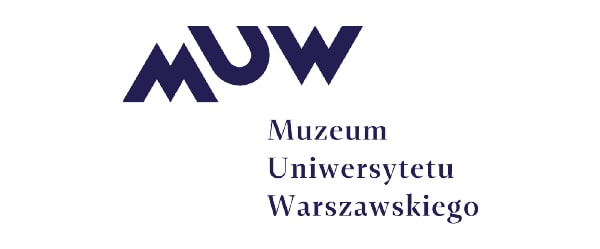Treasures of Janusz Fiszer’s collection
at the University of Warsaw Museum
The aim of the project was to create an online exhibition to objects from Janusz Fiszer’s collection. He was a great history buff and amassed a fine collection of artefacts – centred around his personal interests – which were all of a relevant, chronological and topographical scope. These objects are connected mainly with the history of Anglo-Saxon countries, but there is no shortage of real gems related to important events in Poland, Italy, France, Russia and South American countries. The archival and iconographic materials collected over the years are now of enormous and unquestionable value from both an academic and didactic perspective and also as museum exhibits. Janusz Fiszer’s legacy contains objects from various continents and is probably one of the largest collections of its kind in Europe, if not the world. The uniqueness of the collection is due not only to the number of objects collected – several thousand archival items, photographs and nearly half a million philatelic objects – but also to their uniqueness on a Polish and worldwide scale. It includes previously unpublished museum items of unquestionable epistemic as well as artistic value, e.g. priceless archives, including papal bulls, correspondence of European monarchs (such as Queen Victoria, Edward VIII, George VI, Elizabeth II, Napoleon I, Napoleon III, and Emmanuel III). The collection also includes documents signed by people who had an impact on twentieth-century history (e.g. Benito Mussolini, Winston Churchill, Ignacy Jan Paderewski), presidents of the United States (e.g. Thomas Jefferson, James Monroe, Abraham Lincoln, Richard Nixon) and a collection of several thousand securities issued in the nineteenth and twentieth centuries by the world’s leading railway, car and mining tycoons. The artefacts include a cartographic collection with historical maps of colonies of the British Empire, maps of European and African countries. Dr Fiszer also amassed a priceless collection of nineteenth- and twentieth-century photographs documenting, among other things, Egypt during the period of the great archaeological excavations, life in overseas colonies, and the British royal family. The museum exhibits also contain nineteenth- and twentieth-century prints (engravings) and plans, antique inkwells and cigarette cases, British orders, a collection of autographs and invitations to royal coronations.
Organizer: “Varia” Foundation of Humanities of the University of Warsaw, Museum of the University of Warsaw
The project was financed by the ORLEN Foundation


